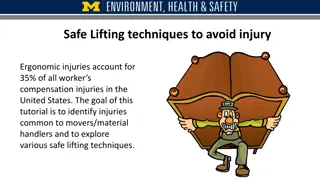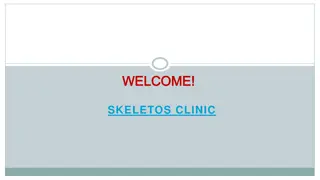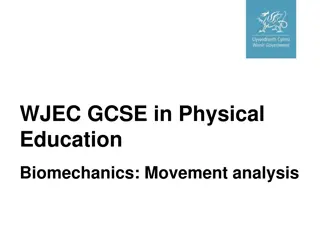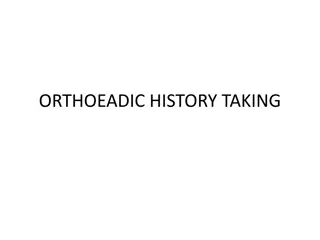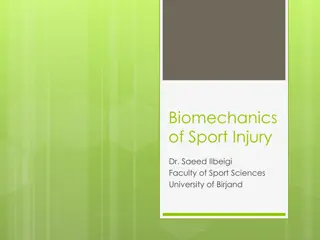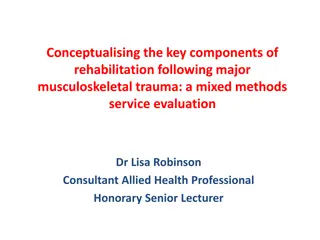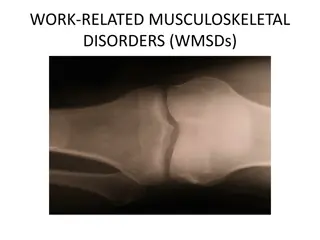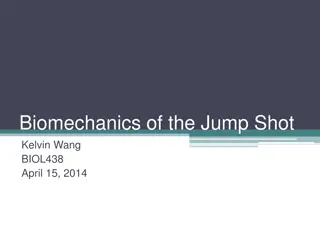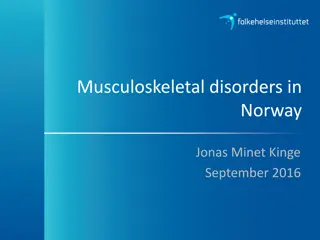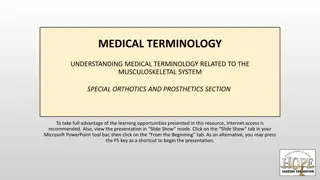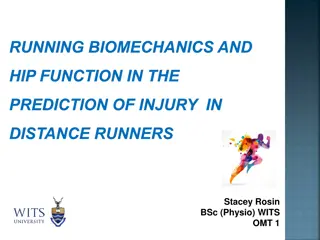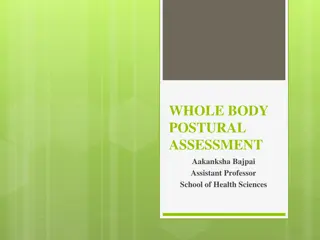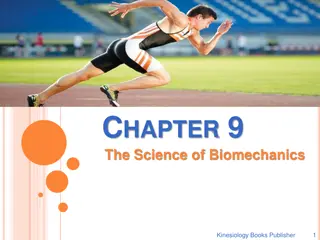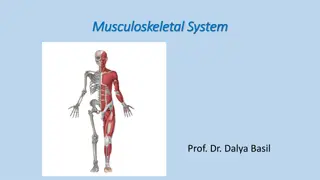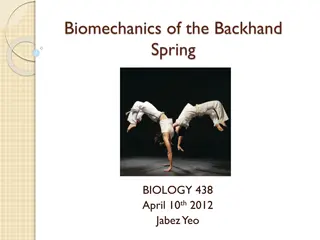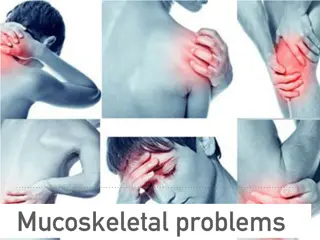Understanding Biomechanics of Work and Musculoskeletal System
Explore the biomechanics of work and musculoskeletal system in this comprehensive overview. Learn about the impact of overexertion injuries, NIOSH reports, and the structure and functions of the musculoskeletal system. Delve into biomechanical models, static and dynamic models, and the biomechanics of lifting, focusing on the low back. Gain insights into forces, moments, and equilibrium in biomechanics.
Download Presentation

Please find below an Image/Link to download the presentation.
The content on the website is provided AS IS for your information and personal use only. It may not be sold, licensed, or shared on other websites without obtaining consent from the author. Download presentation by click this link. If you encounter any issues during the download, it is possible that the publisher has removed the file from their server.
E N D
Presentation Transcript
Biomechanics of Work Chapter 11
NIOSH Report & Others 500,000 workers suffer overexertion injuries each year 60 % involve lifting and lower back. Compensation & indirect costs total $27 $56 Billion (1991). 10 % involve upper extremities (fingers, hand, wrists, arms, & shoulders) due to cumulative trauma disorders (1987)
Musculoskeletal System Bones (206) & connective tissues Tendons fibrous connective tissues connecting muscles to bones Ligaments fibrous tissues that keep articulate joints in place Cartilage translucent elastic tissue Fascia cover body structures separating one from another Muscles (400) composed of bunches of muscle fibers, connective tissue, & nerves. Only body tissue that can expand or contract when fired by a nerve impulse. Long cylindrical cells. Force is dependent on cross section of bundle
Biomechanical Models Fundamental Basis (Newton s laws) 1. Mass remains in uniform motion or at rest until acted on by an unbalanced force. 2. Force is proportional to the acceleration of a mass 3. Any action is opposed by reaction of equal magnitude Static equilibrium Sum of all external forces on object equal zero Sum of all external moments must equal zero
Single-Segment Planer, Static Model
Single-Segment Planer, Static Model (cont.) W = mg W is weight in newtons m is mass in kilograms g is gravitational constant (9.8 m/s2) W = 20kg X 9.8 m/s2 = 196 N Wload on each hand = 98 N W forearm & hand = 16 N (forces at elbow = 0) = - 16 N 98 N + R elbow = 0 R elbow = 114 N (moments at elbow = 0) = (- 16N) (.18 m) + (- 98N) (.36m) + M elbow = 0 M elbow = 38.16
Two-Segment Planer, Static Model
Low Back Biomechanics of Lifting
Low Back Biomechanics of Lifting (cont.) M load & torso= Wloadx h + Wtorsox b Where: h horizontal distance from load to L5/S1 disk b horizontal distance from center of mass of the torso to the L5/S1 disk Mback-muscle = Fback-muscle x 5(N cm) (moments at L5/S1 disk = 0) Fback-muscle x 5 = Wloadx h + Wtorsox b Fback-muscle = (Wloadx h + Wtorsox b)/5 Assume h = 40 cm & b = 20 cm then Fback-muscle = 8Wload+ 4Wtorso Assume Wload= 300 N or 30kg (75lb) & Wtorso= 350 N (80lb) then Fback-muscle = 3800 N or 388kg (855lb)
NIOSH Lifting Guide RWL = LC x HM x VM x DM x AM x FM x Cm
NIOSH Lifting Guide (cont.) RWL = LC x HM x VM x DM x AM x FM x Cm
NIOSH Lifting Guide Example LI = Lifting Index
Manual Materials Handling Material Handling Devices (MHDs) Located as close as possible to body Located about thigh or waist high Don t locate large packages close to the floor (30 inches optimum) Minimize torso twist Minimize frequent lifting per work period
Reducing Vertical & Horizontal Multipliers
Disk Pressure Measurements in Standing & Unsupported Sitting
Common Forms of Cumulative Trauma Disorders (CTDs) Tendon-related in repetitive work muscles steel blood from tendons & inflammation results Neuritis repetitive work in awkward positions irritate & damage nerves Ischemia tingling/numbness caused by lack of blood flow Bursitis inflammation of a bursa (sac containing synovial or viscous fluid)
CTDs of Certain Joints of the Extremities & Remedies Finger vibration-induced white fingers (Raynaud s syndrome) Hand & Wrist Carpal tunnel syndrome Elbow tennis elbow (lateral epicondylitis), golfer s elbow (medial epicondylitis) & telephone operator s elbow Shoulder Tasks requiring hands & arms above the shoulder cause rotator-cuff irritation, swimmer s shoulder, or pitchers arm and can result in injury Evaluate & redesign tasks that cause CTDs. Understand that certain worker populations are more predisposed to these injuries
Hand Tool Design 1. Do not bend the wrist 2. Shape tool handles to assist grip 3. Provide adequate grip span Accommodate sex differences 4. Provide finger & glove clearances Accommodate sex differences



